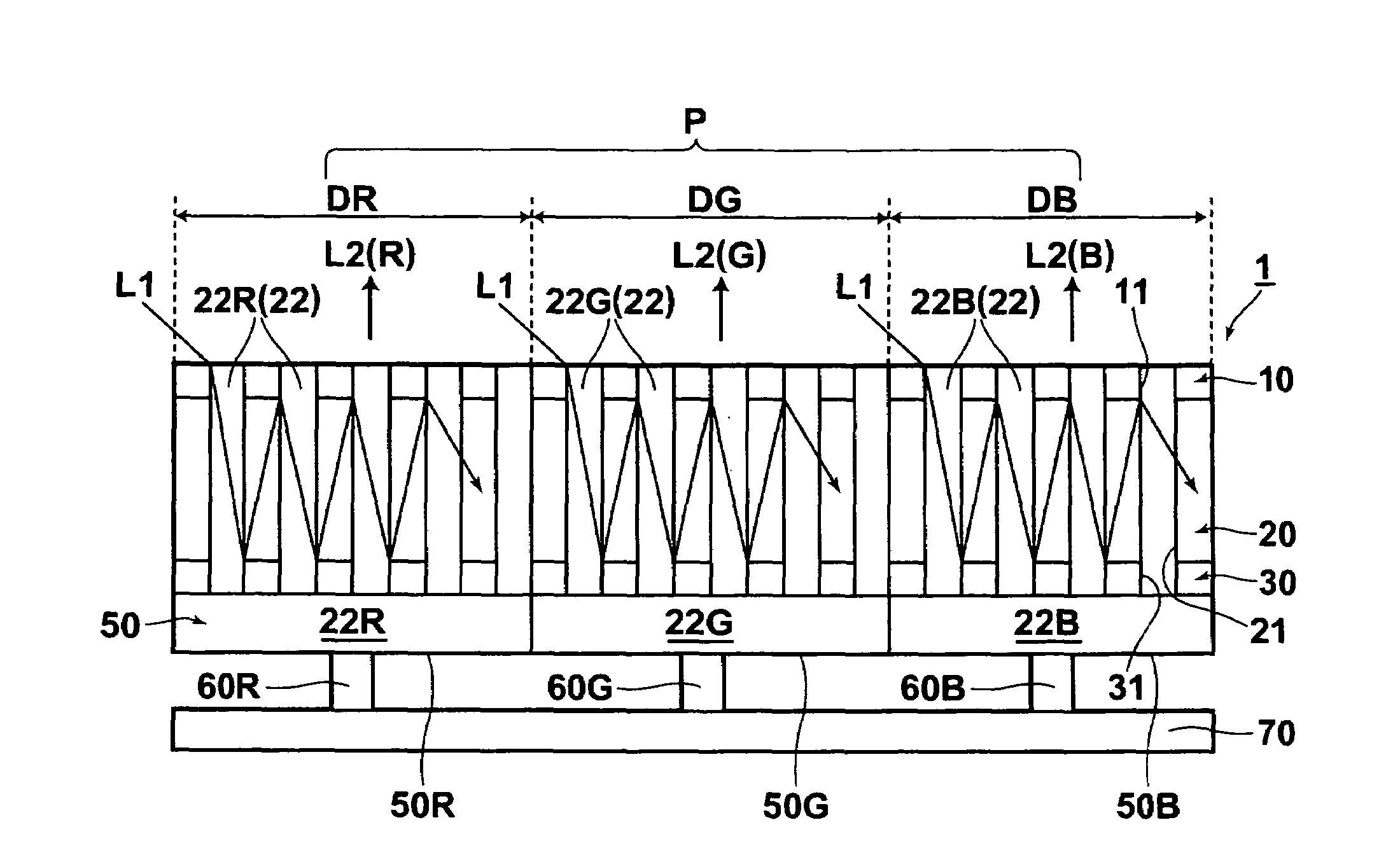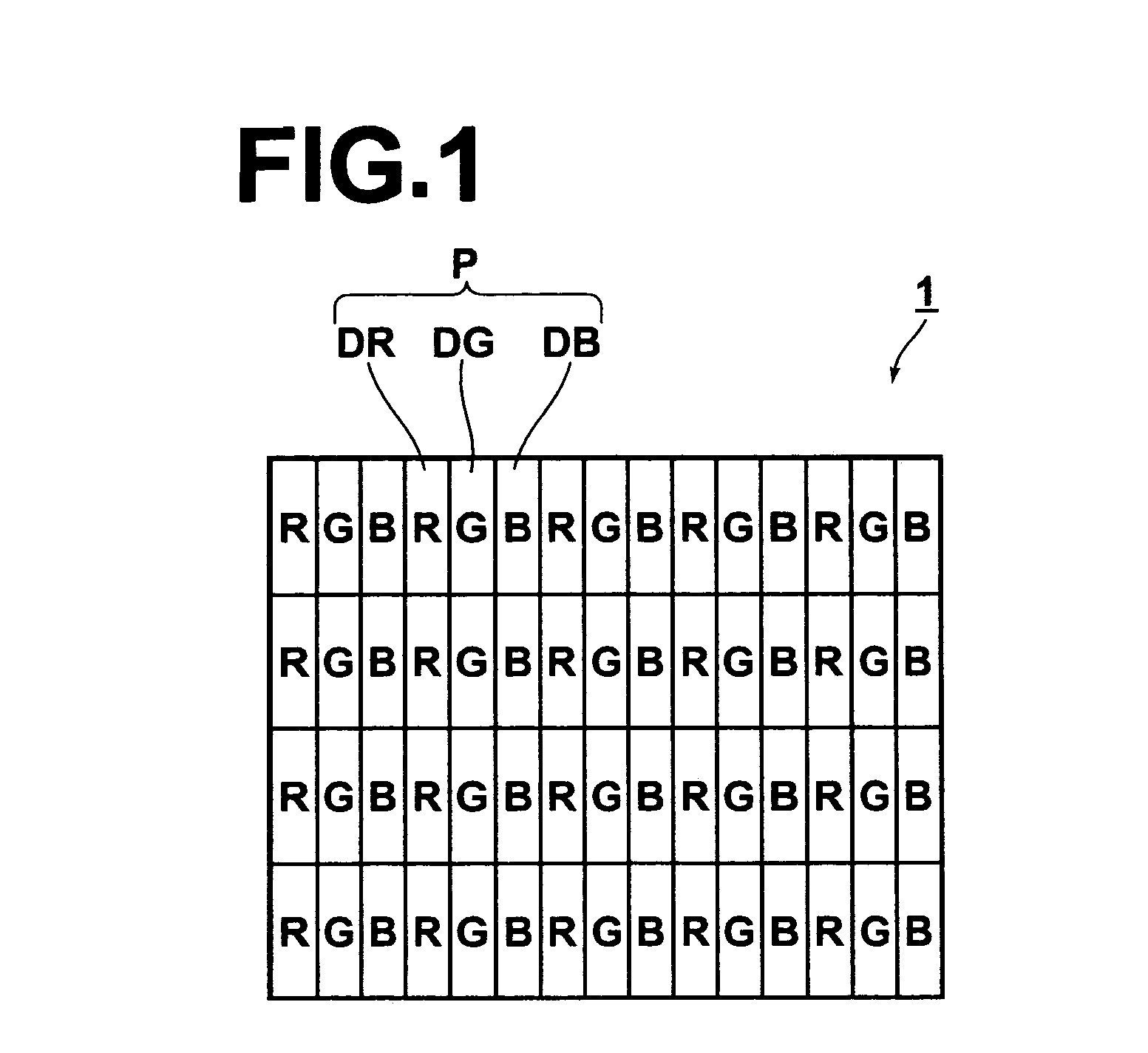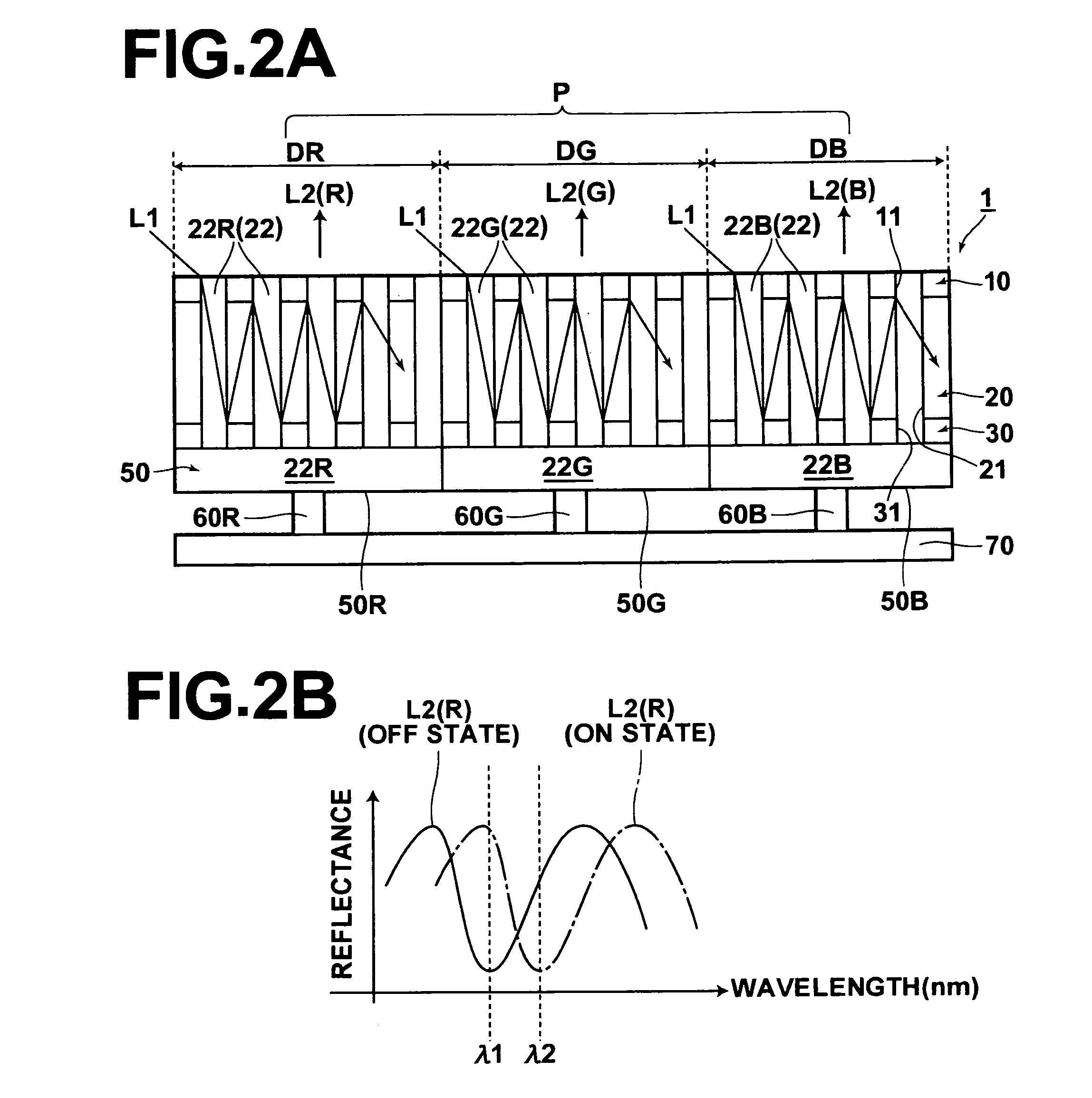Display device
a display device and display technology, applied in the field of display devices, can solve the problems of degrading light utilization efficiency, high cost, difficult manufacturing and high cost, etc., and achieve the effects of high resolution, high resolution, and strong light absorption property
- Summary
- Abstract
- Description
- Claims
- Application Information
AI Technical Summary
Benefits of technology
Problems solved by technology
Method used
Image
Examples
first embodiment
[0042]Hereinafter, the structure of the display device according to a first embodiment of the present invention will be described with reference to FIGS. 1 to 3. FIG. 1 is a plan view illustrating the pixel pattern of the present display device 1. FIG. 2A is a thickness cross-sectional view of a single pixel of the display device 1 according to the present embodiment (hatching is omitted). FIG. 2B shows example spectra of the modulated light. FIGS. 3A to 3C are drawings (perspective views) illustrating the manufacturing process of the display device 1 according to the present embodiment.
[0043]As shown in FIG. 1, the display device 1 according to the present embodiment is a full color device with multitudes of pixels disposed in a matrix. Each of the pixels includes a display dot DR for outputting red light (within a wavelength range from 625 to 740 nm), a display dot DG for outputting green light (within a wavelength range from 500 to 565 nm), and a display dot GB for outputting blu...
second embodiment
[0094]Hereinafter, the structure of the display device according to a second embodiment of the present invention will be described with reference to FIGS. 4A to 4C. The basic structure of the present embodiment is identical to that of the first embodiment. Therefore, identical components are given the same reference symbols and will not be elaborated upon further here. FIG. 4A is a cross-sectional view of the present embodiment corresponding to FIG. 2A in the first embodiment. FIG. 4B shows example spectra of the modulated light (before bandpass filter), and FIG. 4C is an example spectrum illustrating the transmission characteristics of a bandpass filter. In the present embodiment, a reflective type device will be described as an example.
[0095]As shown in FIG. 4A, the display device 2 according to the present embodiment includes a bandpass filter (BPF) 80 provided on the light output side (on the side of the first reflector 10) of the display device 1 according to the first embodime...
third embodiment
[0100]Hereinafter, the structure of the display device according to a third embodiment of the present invention will be described with reference to FIGS. 5A and 5B. The basic structure of the present embodiment is identical to that of the first embodiment. Therefore, identical components are given the same reference symbols and will not be elaborated upon further here. FIG. 5A is a cross-sectional view of the present embodiment corresponding to FIG. 2A in the first embodiment, and FIG. 5B is a top view (viewed from the side of the first reflector 10) of the display device shown in FIG. 5A, illustrating the device when displaying an image.
[0101]The display device 3 according to the present embodiment has a device structure that includes the following arranged from the light input side (upper side in FIG. 5A) in the order listed below: the first reflector 10; translucent porous body 20; and second reflector 30 as in the first embodiment. In the display device 3, however, the pores 21 ...
PUM
| Property | Measurement | Unit |
|---|---|---|
| diameter | aaaaa | aaaaa |
| wavelength range | aaaaa | aaaaa |
| wavelength range | aaaaa | aaaaa |
Abstract
Description
Claims
Application Information
 Login to View More
Login to View More - R&D
- Intellectual Property
- Life Sciences
- Materials
- Tech Scout
- Unparalleled Data Quality
- Higher Quality Content
- 60% Fewer Hallucinations
Browse by: Latest US Patents, China's latest patents, Technical Efficacy Thesaurus, Application Domain, Technology Topic, Popular Technical Reports.
© 2025 PatSnap. All rights reserved.Legal|Privacy policy|Modern Slavery Act Transparency Statement|Sitemap|About US| Contact US: help@patsnap.com



